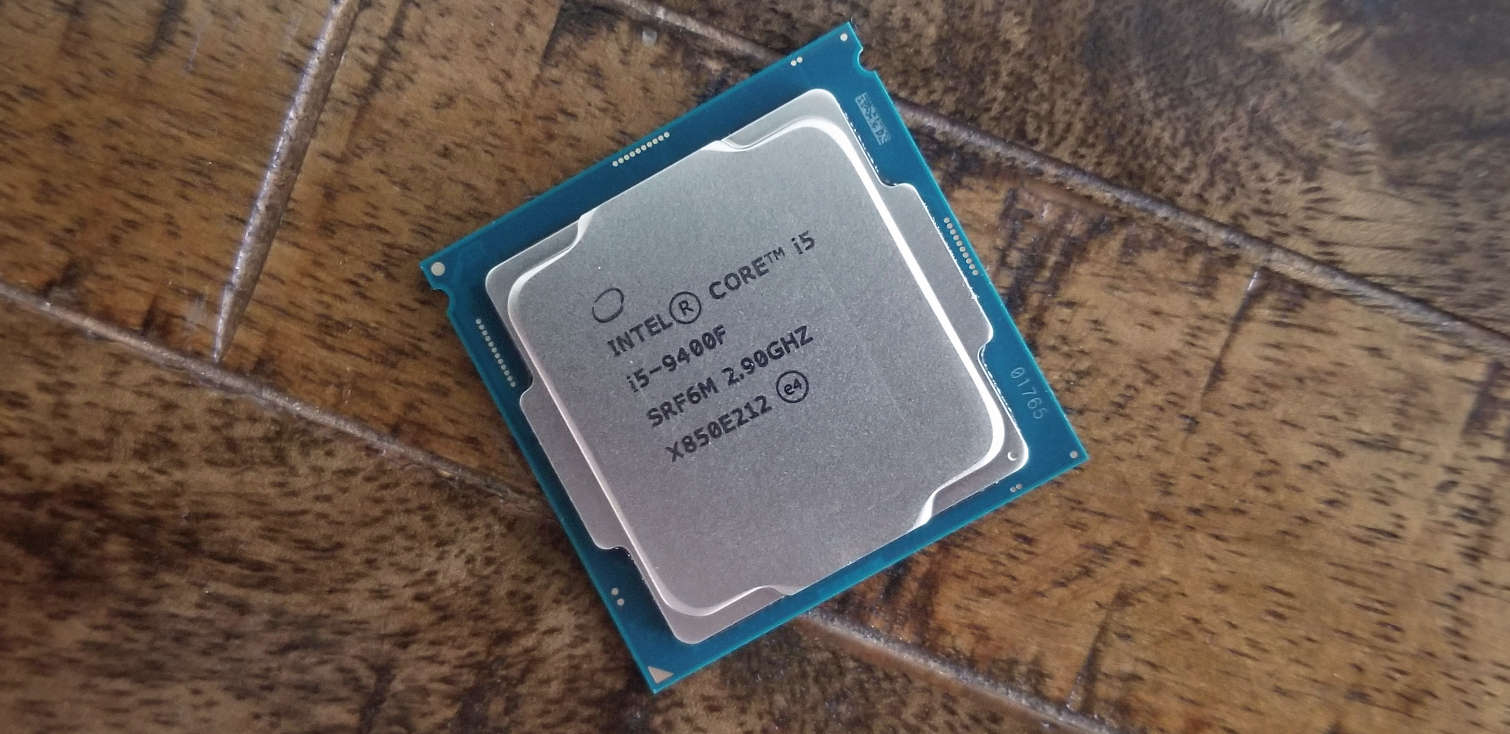Tom's Hardware Verdict
The Core i5-9400F represents the most iterative updates possible, yet it clings to the mid-range gaming crown. But the -9400F’s lack of Hyper-Threading and a locked multiplier allows the Ryzen 5 2600X to rise up as a more attractive option when we look at all-around utility in this price range.
Pros
- +
Leading game performance
- +
Discounted price compared to vanilla Core i5-9400
- +
Flimsy bundled cooler is better than nothing
Cons
- -
Disabled graphics
- -
Locked ratio multiplier
- -
Big price-to-performance disadvantage compared to AMD in threaded workloads
Why you can trust Tom's Hardware
A Moderate Refresh
Intel announced its Core i5-9400 processors in January, but the chips only recently become available in significant quantities. The company also rolled out the rest of its Coffee Lake refresh models, six months after its initial salvo, a delay likely attributable to its ongoing 14nm production shortage.
As Intel struggles to satisfy demand for its chips, AMD has launched its Ryzen 3000-series processors. The updated Ryzen line-up employs a smaller 7nm process that should confer power and price benefits. It'll also wield the new Zen 2 microarchitecture, which is expected to boost performance while Intel remains mired in a derivative of the seven-year-old Skylake design. These chips have now taken our Best CPUs list by storm, so be sure to head there for a list of the latest leading processors. You can also see how the chips stack up in our CPU Benchmark Hierarchy.
Intel's lingering lack of 14nm capacity reverberates through every facet of the industry. To boost supply, the chip-maker decided to start selling CPUs that it would have otherwise deemed defective due to nonfunctional graphics units. As a result, we now have the F-series, which includes disabled graphics hardware, but is otherwise identical to the fully-featured Core processors we're more accustomed to.
That means the Core i5-9400F is nearly identical to the Core i5-9400. Both CPUs serve to replace the impressive Core i5-8400, which was one of the most popular Coffee Lake models. Armed with 6C/6T and a slightly higher clock rate, the 9400s yield an incremental step forward over their predecessor.
Moreover, we're finally seeing the F-series' lower price kick in. The Core i5-9400F's ~$20 discount could be compelling for mid-range gamers who don't need integrated graphics.
Core i5-9400F and Core i5-9400
From an architectural standpoint, the Core i5-9400 and -9400F are essentially the same processor as the Core i5-8400, right down to their 14nm++ process, six physical cores, support for dual-channel DDR4-2666, and 65W TDP. The CPUs also drop into an LGA 1551 interface, and they are supported by existing 300-series motherboards with up-to-date BIOSes. They're multipler-locked, unfortunately, so they include Intel's flimsy stock cooling solution.
| Row 0 - Cell 0 | Core i5-9400F | Core i5-9400 | Core i5-8400 |
| Architecture | Coffee Lake-R | Coffee Lake-R | Coffee Lake |
| Socket | LGA 1151 | LGA 1151 | LGA 1151 |
| Cores / Threads | 6 / 6 | 6 / 6 | 6 / 6 |
| Base Frequency (GHz) | 2.9 | 2.9 | 2.8 GHz |
| Boost Frequency (Active Cores - GHz) | 4.1 | 4.1 | 4.0 GHz |
| L3 Cache | 9MB | 9MB | 10.5MB |
| Process | 14nm++ | 14nm++ | 14nm++ |
| TDP | 65W | 65W | 65W |
| Memory Speed | DDR4-2666 | DDR4-2666 | DDR4-2666 |
| Memory Controller | Dual-Channel | Dual-Channel | Dual-Channel |
| PCIe Lanes | x16 Gen3 | x16 Gen3 | x16 Gen3 |
| Integrated UHD Graphics GT2 (Base/Boost MHz) | 350 / 1,050 | No | 350 / 1,050 |
| Recommended Customer Pricing | $182 | $182 | $182 - $187 |
Again, the Core i5-9400F lacks integrated graphics, which isn't an issue for gamers who already use add-in GPUs. However, we find it interesting that Intel maintains the same $182 recommended price as its standard Core i5-9400.
Get Tom's Hardware's best news and in-depth reviews, straight to your inbox.
| Active Cores (GHz) | Base Frequency | 1 | 2 | 4 | 6 |
| Core i5-9600K | 3.7 | 4.6 | 4.5 | 4.4 | 4.3 |
| Core i5-9400/F | 2.9 | 4.1 | 4.0 | 4.0 | 3.9 |
| Core i5-8400 | 2.8 | 4.0 | 3.9 | 3.9 | 3.8 |
Relative to the Core 5-8400, Intel boosts the -9400/-9400F's base frequency and Turbo Boost clock rate by 100 MHz, which should yield slight performance benefits. The Core i5-9400 models also include new baked-in silicon mitigations for the Meltdown vulnerability, along with a combination of hardware- and software-based mitigations for the Spectre and L1TF vulnerabilities. The overhead of software-based patches applied to older processors can reach as high as 10% in certain workloads. That impact is greatly reduced on newer processors. Compared to the Core i5-8400, we didn't measure any significant speed-ups beyond what we expected. However, optimized mitigations could help deliver more of a performance uplift to enthusiasts migrating from much older platforms.
With the launch of its Coffee Lake refresh, Intel finally switched to a solder-based thermal interface material (sTIM), improving heat transfer between its die and heat spreader. Interestingly, though, some Core i5-9400 models initially came with standard polymer-based thermal interface material (thermal grease), while others shipped with the more efficient sTIM. Intel tells us that depended on where each CPU was manufactured, though all Core i5-9400s now come with sTIM, while the locked F-series models continue to employ pTIM.
In either case, you can determine whether your CPU includes sTIM by checking its stepping. P0- and R0-stepping processors come with sTIM, while the U0 and B0 steppings utilize pTIM. Intel plans to stick with pTIM for all locked F-series models, like our U0-stepping Core i5-9400F.
MORE: Best CPUs
MORE: Intel & AMD Processor Hierarchy
MORE: All CPUs Content

Paul Alcorn is the Editor-in-Chief for Tom's Hardware US. He also writes news and reviews on CPUs, storage, and enterprise hardware.
-
tennis2 Would like to see some testing done to determine how core count affects games these days with the "core count race" going on. It still seems like 4-6 cores is where the cutoff is before frequency is the determining factor of frame rates.Reply
Also show if/how online multiplayer changes that conclusion. -
R_1 in the comparison chart you have the 9400f having graphics and the 9400 as not having graphics.Reply -
NightHawkRMX 9400f would be a good deal if it had a higher turbo or overclocking support. Z390 boards suitable for overclocking are expensive as well.Reply
Otherwise, Ryzen 5 2600x has 6 more threads, higher turbo, overclocking support, and cheap overclocking boards than negate the slightly higher chip price.
Still waiting on Computex. -
Karadjgne I'm still wondering why there's even testing of single core performance. In the rendering test, multi-core, the Ryzens dominated Intel. Very next test was a single core performance test where as usual, Intel was stronger. Why? I can't think of any single core rendering, or games for that matter. It's kind of archaic to my mind. A multi-core test on software that that uses multiple cores makes perfect sense. It shows how well the software responds to the amount of threads. Saying an intel beats a Ryzen in single core rendering is.....Reply
(I'm not gonna use those words in polite company) -
pete_101 I see the CPU has a base frequency of 2.9 and a turbo of 4.1 GHz, but this will be a single core maximum speed. Although it's locked, it should be possible in the mobo BIOS to set all 6 cores to run at this frequency.....if you have a good enough cooler.Reply -
NightHawkRMX There should be an 8 thread Cinebench test to compare CPUs. Most games only use around 8 threads or a little more (battlefield comes to mind). An 8 thread test would be the most accurate way to test gaming CPUs.Reply -
Anubis666 It's funny how prices are different in different countries.. In one thread ,a guy says 15-20$ less than Ryzen 2600 so just go with the i5 9400f..Reply
Here in India i5 9400f is 60$ cheaper than Ryzen 2600 and 95$ cheaper than 2600X..
I'm still confused to go with i5 9400f over 2600 just for the multi thread.. As I wanted it for playing , recording Games,Edit and upload to YouTube and, probably streaming Dota 2 in near future.
The price of i5 9400f is tempting but I'm not sure it can able to do stuff I mentioned above with close to ease..
I'm sure coming Ryzen 3000 is even high price due to high demand in here.
